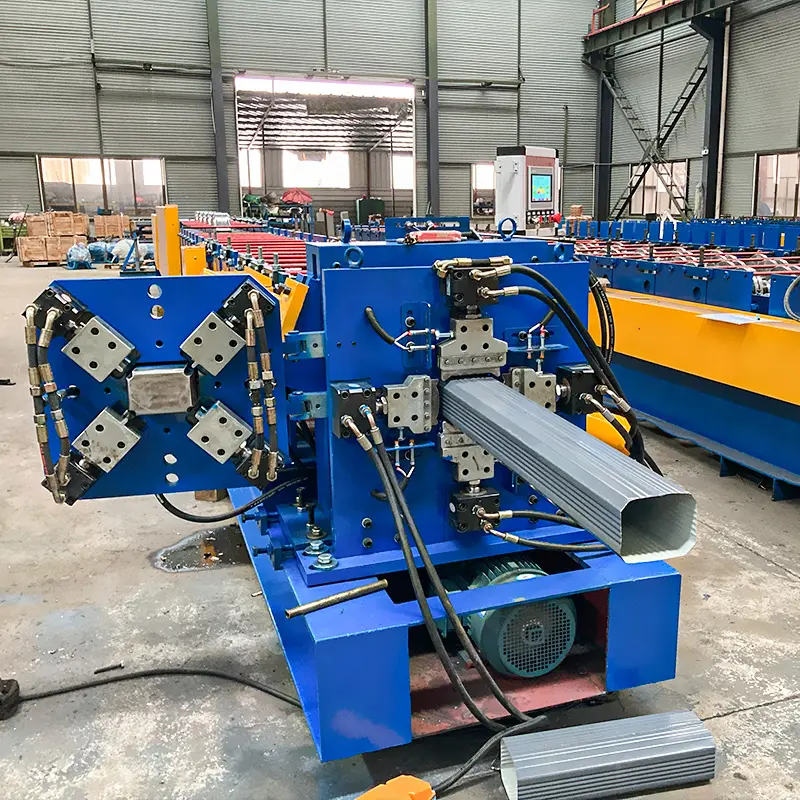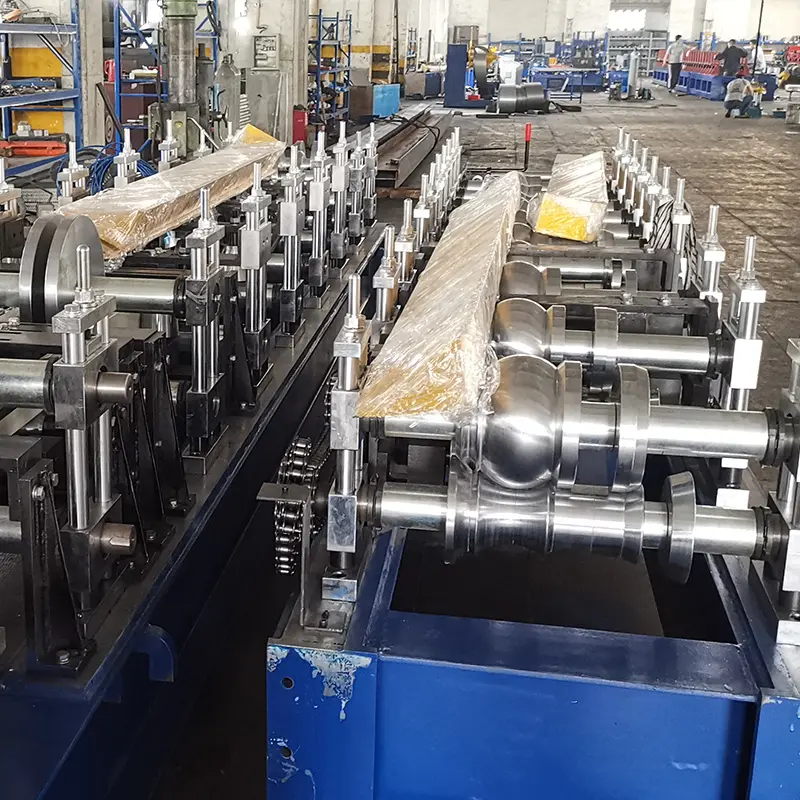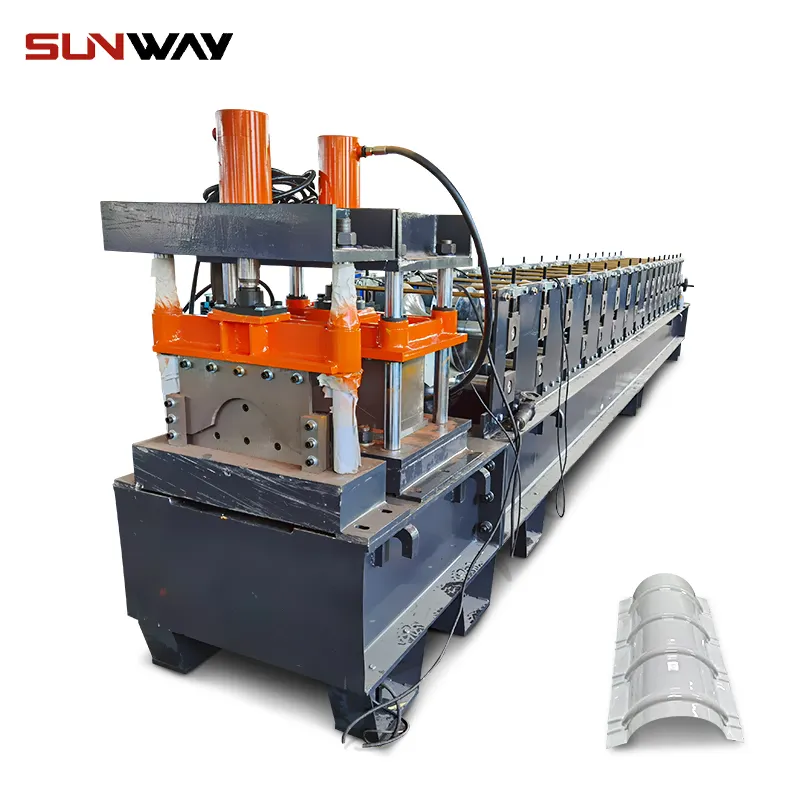ভূমিকা
Ceiling T bar roll forming machines play a crucial role in the construction industry, enabling the efficient and precise manufacturing of T-shaped bars used in suspended ceilings. These machines automate the production process, saving time and labor costs, and produce consistent high-quality results. In this article, we will delve into the world of ceiling T bar roll forming machines, exploring their components, working principles, benefits, and factors to consider when choosing the right machine for your needs.
Understanding Ceiling T Bar Roll Forming Machine
Ceiling T bar roll forming machines are specialized equipment designed to shape metal coils into T-shaped bars, which are widely used in commercial and residential construction projects. These T bars form the skeletal framework of suspended ceilings, providing support for ceiling tiles and other components.

Benefits of Using Ceiling T Bar Roll Forming Machines
Increased Efficiency and Productivity
By automating the roll forming process, ceiling T bar roll forming machines significantly increase efficiency and productivity. Compared to traditional manual methods, which are time-consuming and labor-intensive, using a roll forming machine allows for faster production rates and quicker project completion.
Consistent and Precise Results
One of the key advantages of using a roll forming machine is the consistent and precise shaping of T bars. The machine’s automated process ensures that each piece is uniform in shape and dimensions, reducing waste and enhancing the overall quality of the final product.
Cost-Effectiveness
Although the initial investment in a ceiling T bar roll forming machine may seem substantial, the long-term cost savings are substantial. The reduction in labor costs, minimized material waste, and increased production speed make the machine a cost-effective choice for manufacturers.
Components and Working Principle of Ceiling T Bar Roll Forming Machine
Ceiling T bar roll forming machines consist of several essential components that work in synergy to produce the T-shaped bars. Understanding these components is crucial in optimizing the machine’s performance and ensuring smooth operation.
ডিকয়লার
The decoiler is the starting point of the roll forming process. It holds the metal coil and feeds it into the machine for further processing. Decoilers can be manual or automatic, depending on the machine’s level of automation.
Feeding System
The feeding system is responsible for guiding the metal coil into the roll forming unit accurately. It ensures a steady and continuous feed of material, which is essential for achieving precise T bar profiles.
Roll Forming Unit
The roll forming unit is the heart of the machine. It consists of a series of rollers and forming dies that progressively shape the metal strip into the desired T bar profile. The number and configuration of rollers vary depending on the specific T bar design.
কাটিং সিস্টেম
After the T bar profile is formed, the cutting system trims the length of the bar to the desired size. Some machines feature flying or stationary cutting systems, each with its advantages.
পিএলসি কন্ট্রোল সিস্টেম
The PLC control system serves as the brain of the machine, overseeing and regulating the entire roll forming process. Operators can input parameters and make adjustments through the control panel.

Different Types of Ceiling T Bar Profiles
Ceiling T bar roll forming machines are versatile and can produce various types of T bar profiles to meet different construction requirements. Some common types of T bar profiles include:
- Main Runner: The primary T bar that forms the main structure of the suspended ceiling system.
- Cross Tee: Smaller T bars that intersect with the main runners, providing support for the ceiling tiles.
- Wall Angle: L-shaped bars that run along the walls, forming the perimeter of the suspended ceiling.
- Shadow Line: Specialized T bars with a recessed profile, creating an aesthetically appealing shadow effect between the tiles.
Factors to Consider When Choosing a Ceiling T Bar Roll Forming Machine
Selecting the right ceiling T bar roll forming machine is crucial to ensure optimal performance and productivity. Consider the following factors before making your purchase:
Production Capacity
Determine the required production capacity based on your project needs. Choose a machine that can handle the desired output without compromising on quality.
Material Compatibility
Ensure that the roll forming machine is compatible with the type and thickness of metal coil you plan to use. Different machines may have limitations on the materials they can process effectively.
Machine Size and Space Requirements
Consider the available space in your production facility and choose a machine that fits comfortably within that space.
Automation Features
Assess the level of automation offered by the machine. More advanced automation features can enhance productivity and reduce the need for manual intervention.
Maintenance and Troubleshooting of Ceiling T Bar Roll Forming Machine
To ensure the longevity and reliable performance of your ceiling T bar roll forming machine, regular maintenance is essential. Follow these guidelines:
Regular Maintenance
- Lubrication: Keep all moving parts well lubricated to prevent wear and tear.
- Inspections: Conduct routine inspections to identify and address any potential issues.
- Cleaning: Remove dust and debris from the machine regularly to maintain optimal performance.
Common Issues and Solutions
- Uneven T Bar Profiles: Check for misaligned rollers and adjust them accordingly.
- Material Jamming: Ensure proper alignment and tension in the feeding system to avoid material jams.
- Inconsistent Cutting: Verify that the cutting system is functioning correctly and the blades are sharp.
Safety Precautions When Operating the Machine
Safety should be a top priority when operating a ceiling T bar roll forming machine. Implement the following precautions to protect operators and prevent accidents:
- Training: Provide comprehensive training to operators on how to use the machine safely.
- Safety Guards: Install appropriate safety guards to protect operators from moving parts.
- Emergency Stop: Ensure an easily accessible emergency stop button on the machine.
- Personal Protective Equipment: Require operators to wear appropriate PPE, such as gloves and safety glasses.
Future Trends in Ceiling T Bar Roll Forming Technology
As technology advances, ceiling T bar roll forming machines are likely to incorporate more sophisticated features. Some potential future trends include:
- Advanced Automation: Further automation and integration with smart systems to optimize production processes.
- Material Innovation: Compatibility with a broader range of materials, including eco-friendly options.
- Real-Time Monitoring: Sensors and analytics to monitor machine performance and detect issues proactively.

উপসংহার
Ceiling T bar roll forming machines have revolutionized the construction industry by streamlining the production of T-shaped bars used in suspended ceilings. These machines offer numerous benefits, such as increased efficiency, consistent results, and cost-effectiveness. When choosing a roll forming machine, consider factors like production capacity, material compatibility, and automation features. Proper maintenance and adherence to safety precautions are vital for the smooth operation and longevity of the machine. As technology continues to evolve, we can expect exciting innovations in ceiling T bar roll forming technology, making construction processes even more efficient and sustainable.
FAQs
11.1 How long does it take to set up the machine?
The setup time for a ceiling T bar roll forming machine can vary depending on the specific model and complexity of the project. However, with proper training and experience, setup times can be minimized.
11.2 Can the machine produce customized T bar profiles?
Yes, many modern ceiling T bar roll forming machines can be adjusted to produce customized T bar profiles to meet specific project requirements.
11.3 What materials can be used with this machine?
Ceiling T bar roll forming machines are designed to work with various materials, including galvanized steel, stainless steel, and aluminum.
11.4 Is it possible to adjust the machine for different sizes of T bars?
Yes, most ceiling T bar roll forming machines are equipped with adjustable rollers and forming dies, allowing for easy customization of T bar sizes.
11.5 How can I ensure the safety of the operators during machine operation?
To ensure operator safety, provide comprehensive training, install safety guards, have an accessible emergency stop button, and require the use of appropriate personal protective equipment (PPE).
